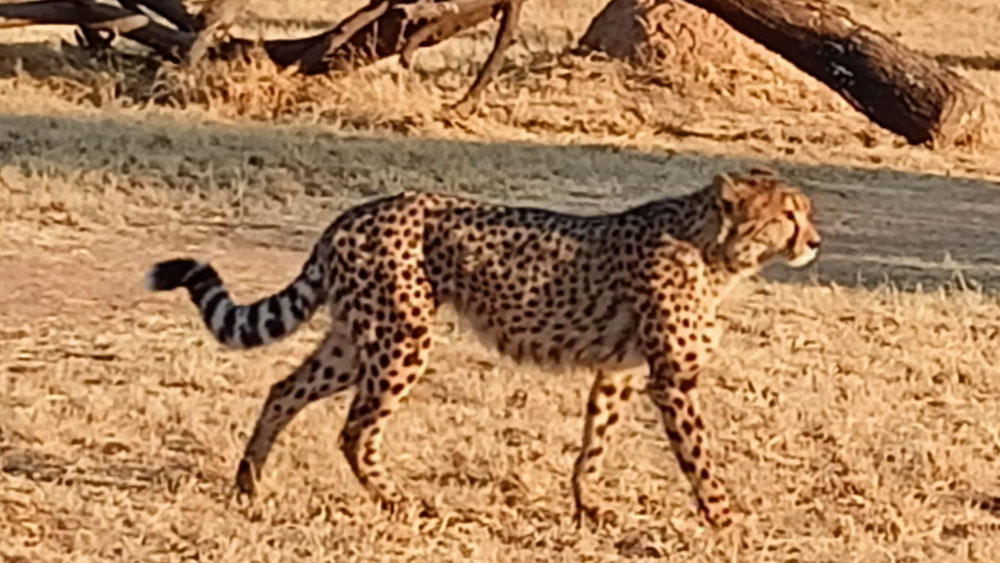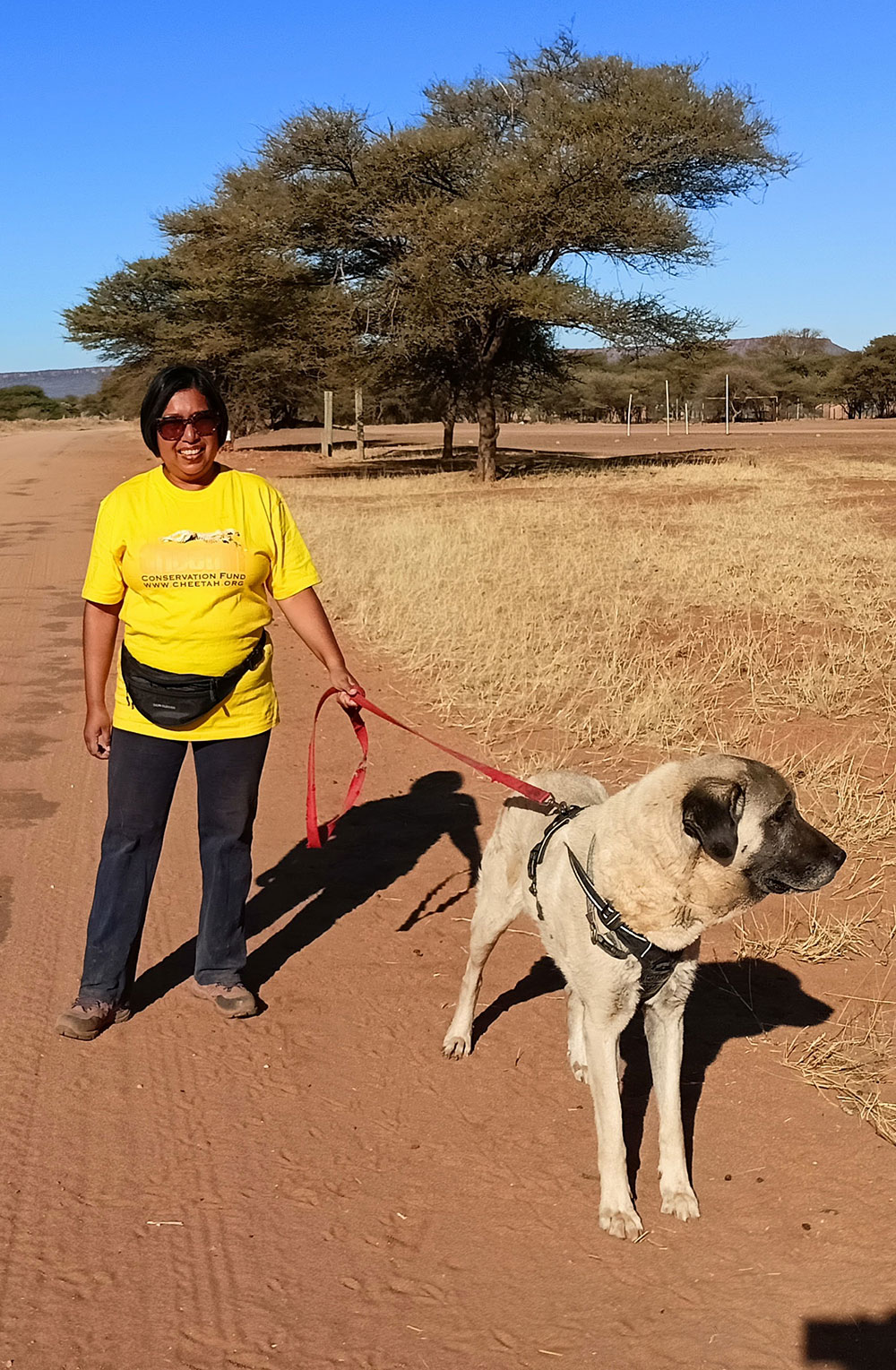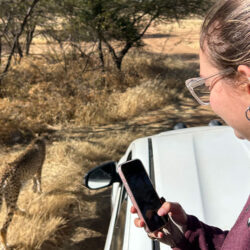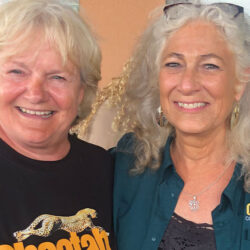Revisiting the Cheetah Conservation Fund: A Working Guest’s Second Stay
-

- by Jill Downey August 20, 2024

July 2024 saw me returning to the Cheetah Conservation Fund in Namibia fifteen years after I’d first visited as a working guest.
As I was driven down the long track from the main road, I could see the distinctive shape of the Waterberg Plateau dominating the landscape and my first impression was that everything was exactly as I remembered it. But, as I was welcomed and shown around the site, I could see that all the wonderful, inspiring conservation projects at CCF had grown and developed since I was last there in 2009. Over the next two weeks, I was reminded of CCF’s holistic approach to conservation at regional, national and international levels.

My time as a working guest was diverse and different every day. My first day saw me allocated to the Cheetah Team, first watching the daily cheetah run – when the younger cheetahs are exercised and tourists are introduced to the work of CCF – and then preparing meat with supplements and, where necessary, medication for the twenty-eight cheetahs currently in residence. My knife skills improved and I learned how to remove fat, gristle and broken bones from the meat before it was given to the cheetahs. Never has a nail brush been so useful than after a session in the meat room!
Feeding the individual cheetahs varied from serving up dishes of soft, pre-digested mince for the older cats to leaving larger lumps of meat in enclosures for cheetahs who were rehabilitating before being returned to the wild.
During my stay, I witnessed an incredibly powerful moment when a wild cheetah was released after recovering from an injury. Her progress will continue to be monitored by CCF through a GPS collar. By way of contrast, the permanent residents include cheetahs who had been rescued as cubs and never had the chance to learn to hunt and survive in the wild, and cheetahs who had been illegally kept as pets.

My duties the following day took me to the Dog Team – feeding and caring for the Anatolian livestock guardian dogs, bred and trained at CCF before taking up their jobs on farms to protect goats and sheep from predators. This is a great example of how CCF tackles conservation in the real world, working with the community to reduce conflict between farmers and predators by providing practical solutions and tools. I was delighted to meet nine new Anatolian puppies during my stay, and their proud mum, Misty-Lee!
A model farm has been developed at CCF, featuring dairy goats, Boer goats (used for meat production), and fat-tailed Damara sheep. The farm is used for training the livestock guardian dogs, showcasing their value to the farming community. It is also the source of goat’s milk, used by CCF’s Dancing Goat Creamery to make several types of cheese, ice cream, fudge and soap. I immensely enjoyed my turn working in the creamery! On my day off, I made a bee line for the café where I had an Amarula ice cream milk shake.

I also worked in the Chewbaaka Memorial Garden, named after the very first orphaned cheetah cub rescued by Dr Laurie Marker, the founder of CCF. I had been fortunate to meet Chewbaaka on my visit fifteen years earlier and I was privileged this time to pay my respects at his graveside. Chewbaaka lived to the age of sixteen, almost double the lifespan of a wild cheetah.
I was fascinated to work with the Ecology Team’s two scat identification dogs – Belgian Malinois sisters, Enya and Gamena. Their discipline and ability to distinguish cheetah scat from other predators was wonderful to see.

In addition to the working guests, there were many interns – undergraduates and postgraduates from around the world – who were gaining valuable hands-on experience and gathering data for their research projects. Working with the vets, zoologists and conservationists of the future was an incredibly inspiring aspect of my stay. I was particularly impressed that CCF had created a framework to enable many Namibian interns to participate alongside their international peers.
Working guests and interns get the opportunity to do and see things that they couldn’t if they simply visited Namibia as a tourist. For example, one of the high points of my stay was sitting in a hide for twelve hours, doing a species count at a waterhole. While not always comfortable, it was fascinating and not the sort of thing I could have done as a tourist on safari!
To sum up my experience as a working guest, I would say I learned new skills, saw some absolutely amazing wildlife, met inspiring people, worked hard, and ate a lot of good food! I’d highly recommend the experience to people from all backgrounds.
Related Reading
-
October 20, 2025
How Do You Outrun Extinction? -
October 17, 2025
Two CCF Trips – Eastern and Southern Africa




